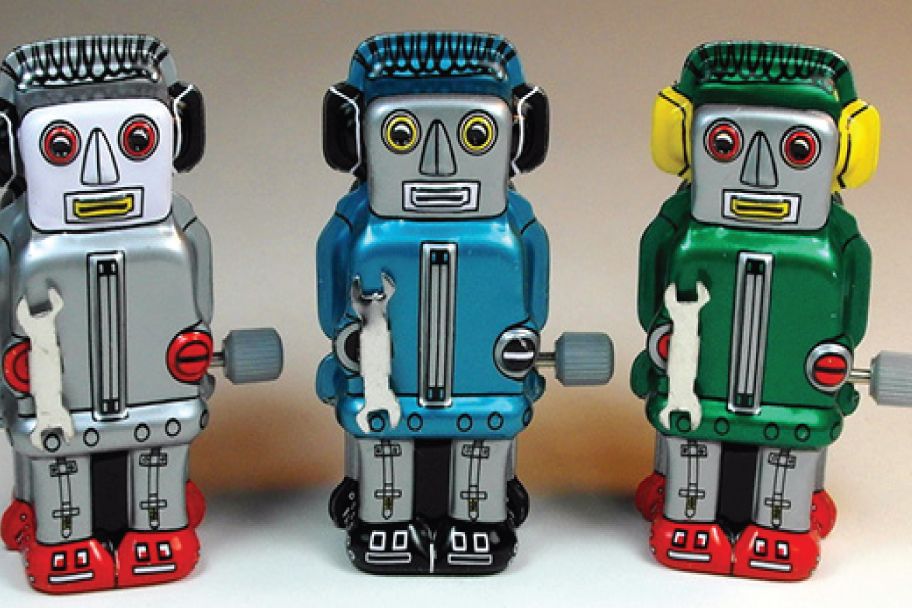RPA enables a business to realize a 10-25 percent increase in cost savings, potentially scaling to 30-50 percent with AI-enhanced RPA - Morgan Stanley
Automation Anywhere has 210 pre-built bots in its Bot Store and have over 140 plus partners of which 80 plus are submitting bots in the Bot Store adding that they have over 40 bot submission a week.
Our own AI strategy is firstly about a platform play, so there are organisations like Google, Microsoft, Amazon, that are spending billions of dollars researching this capability. Our strategy is to create the world’s biggest R&D budget by bringing all of those technologies together and surfacing them to business users - Blue Prism
The global market for RPA software and services reached $271 million in 2016 and is expected to grow to $1.2 billion by 2021 at a compound annual growth rate of 36% - HfS Research
All the above quotes simply illustrate the fact that rule-based RPA is getting commoditized and charting the path for knowledge based RPA. However, many companies need to cross the chasm by having a clear strategy from discovering the RPA'ble opportunities to maintaining the deployed bots. Though technology adoption is crucial for companies to gain a competitive edge, this is indeed more important for companies to focus more on what matters the most.
When rule based bots are moved from development & testing to live, there needs a clear handover procedure to the next stage i.e. to the "control room" and & defined change management structure. Otherwise, there will be confusion for the business user to whom to contact in case of an issue. This severely undermines the confidence with RPA CoE and hence it is very critical to set it right from the beginning i.e. a robust support structure to manage incidents, minimize exceptions, handle service requests and govern change requests.
However, the RPA CoE team is already under tremendous pressure in identifying new automation opportunities and delivering bots within agreed budgets & timelines. Secondly, with the lessons learnt & expertise gained, they need to review several business cases that are dropped in the initial stages or low in the priority list and address them. Thirdly, they also need to invest time in understanding the 80% of semi-structured / unstructured data with cognitive RPA capabilities. Lastly, the entire data generated in terms of logs from several process transactions need to be leveraged by the analytics. This is something like how kibana & elastic search do with the logs created by UiPath. This enables to identify new avenues to optimize the process post automation. Adding to the above, they also need to manage the mandatory activities like escalations, security, infrastructure, licensing, policies, standards, cultural adoption and so on.
In the intelligent automation journey, RPA is just a first milestone and much interesting avenues still lie beyond the RPA implementation. As RPA is very closely tied to the unique business process knowledge and organization culture, there needs to be a mechanism to nurture the lessons learnt or best practices into tangible means that take the organization to the next milestone. Hence, the secret sauce of the organization's RPA CoE is to keep focused on the upward journey.
However, companies have adopted several models in staffing RPA CoE like 1) completely outsourced to RPA Service Providers 2) Keep discovery in-house & outsource development & support alone 3) keep everything in-house 4) everything in-house but augment partially by RPA service providers. Also, there are several pricing models like per bot pricing, time & material based pricing and outcome based risk-reward models.
Having reviewed several of the above perspectives, there are two broad areas for the RPA CoE team 1) Focus on the road to be laid 2) Focus on the road laid already. This means to carve out a niche team that is specialized only in the activities post implementing bots. This methodology is a proven model in any software development project. Several IT service providers manage the maintenance project that was not developed by them. Inherently, this has several benefits like proper documentation, process handover, simplification & optimization, structured policies, best practices implementation, outside-in views, SLA liabilities and so on. As everyone of us is aware that, process documentation is a critical part of any RPA project that enables the coding of tacit knowledge available with the manual process.
From another perspective, the industry has seen the outsourcing of NOC and SOC activities in order to alleviate many internal challenges, reduce high operational costs, get flexible services, pay attention to core jobs and have support services 24x7 to keep an eye on network & security infrastructure. This market is matured and commoditized enough by the managed service providers.
Continuous Improvement and Innovation of RPA is a must for companies to be in pace with changing technology landscape, industry regulations and markets in order to remain competitive.
Adopting Robotic Process Automation (RPA) sounds straightforward, but it can be a complicated and challenging exercise - Everest Group
In a nutshell, the overarching question is, what is the best model for supporting the bots and managing the change after release?. In simpler words, Where is your bot command center (BCC)?
#RPA #AI #BOTS #HfSResearch #AutomationAnywhere #blueprism #everestgroup











